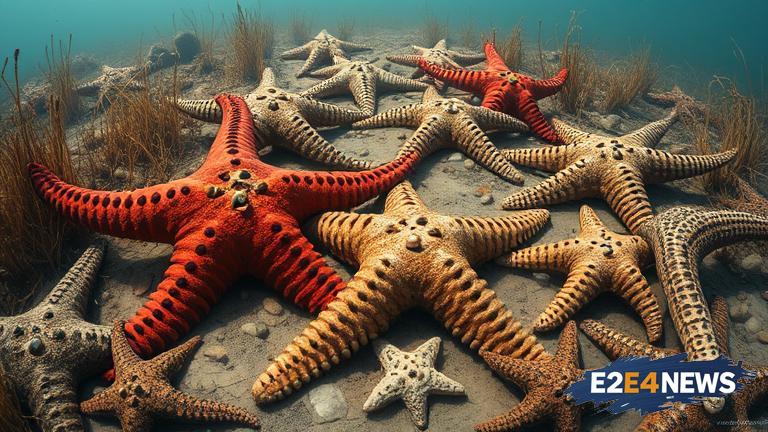A devastating disease known as sea star wasting disease has been killing billions of starfish, also known as sea stars, along the coastlines of many countries. The disease, which was first identified in 2013, has been spreading rapidly and has already had a profound impact on the marine environment. The starfish, which play a crucial role in maintaining the balance of the ecosystem, are dying off at an alarming rate. The disease causes the starfish to become weak and lethargic, before eventually disintegrating into a pile of mush. The exact cause of the disease is still unknown, but scientists believe it may be linked to a combination of factors, including climate change, pollution, and overfishing. The loss of the starfish has had a ripple effect throughout the ecosystem, with many other species that rely on them for food or shelter being impacted. The kelp forests, which provide a habitat for many marine species, are also being destroyed as a result of the disease. Without the starfish to keep the sea urchin population under control, the urchins are overgrazing the kelp, causing it to disappear. This has had a devastating impact on the many species that rely on the kelp for food and shelter. The disease has also had an impact on the commercial fishing industry, with many fisheries being closed as a result of the decline in starfish populations. Scientists are working to understand the cause of the disease and to find a way to stop it, but so far, no solution has been found. The disease has been identified in many countries, including the United States, Canada, and Australia. In New Zealand, where the disease was first identified, the government has established a task force to deal with the issue. The task force is working to monitor the spread of the disease and to develop strategies to mitigate its impact. The disease has also raised concerns about the impact of climate change on the marine environment. As the ocean warms, it is likely that more diseases will emerge, having a devastating impact on marine ecosystems. The loss of the starfish has also highlighted the importance of preserving biodiversity in the marine environment. The starfish play a crucial role in maintaining the balance of the ecosystem, and their loss has had a profound impact on the many species that rely on them. The disease has also had an impact on the tourism industry, with many popular diving and snorkeling spots being closed as a result of the decline in starfish populations. The economic impact of the disease is also being felt, with many businesses that rely on the marine environment being impacted. The disease has also raised concerns about the impact of human activities on the marine environment. The use of pesticides and other chemicals has been linked to the decline in starfish populations, and the disease has highlighted the need for more sustainable practices. The disease has also highlighted the importance of monitoring the marine environment and responding quickly to any changes. The rapid spread of the disease has caught many scientists and policymakers off guard, and it has highlighted the need for more research and monitoring of the marine environment. In conclusion, the sea star wasting disease has had a profound impact on the marine environment, and it has highlighted the need for more sustainable practices and more research into the causes of the disease.





